For me the figure represents something common, a ground with which we all share at least some relative experience. It is a concrete thing which we all recognize and know intimately, better than any other thing in the world.
Our hands, our feet, our bellies and stretch marks. It is a thing we look at ceaselessly, furtively and passionately; at train stations, in malls, theaters, from windows and escalators; our stuff, other people’s stuff. Café life, people watching, voyeurism, casual glances; we are always on watch, on display. We know to minutia the eyebrow tensing of a ticked-off mom, the flush of a lover’s cheek, the raise of gooseflesh on a child’s arm. As social animals, we make a life-long study of this stuff. We have to.
And there is beauty here as well. We are all the product of what a thousand, thousand generations of our forebear’s found compelling. Just as plants put out flowers which bees find irresistible, and trees have developed tasty fruits perfect for the transportation of seeds through the digestive tracts of wide ranging ruminants, so have the forms of our species conspired to produce a profound aesthetic.
This is not about presenting the ideal figure. This is where the argument has long gotten tripped up. Canons of beauty are imposed by society. Nature has far richer treats. Each individual is a universe and, studied, reveals unexpected harmonies, resonances, discords and counter rhythms in the disposition of limbs, features, flab and muscle that are endless and fascinating. And these carry associations and meanings and subtle implications readily accessible to virtually all of us.
There is an entire language of gesture and story here universally shared and yet barely tapped in the world of contemporary art. For any seeking a universal language of art, the human figure is the Rosetta stone!
For artists though, and any who seek more rigorously, a truth from which on which to base our work needs to be much more simple, much broader, and yet capable of great depth. I believe that direct observation from nature via the figure is such a truth. I suspect that this return to the figure is driven exactly by the desire to seek a reliable base on which to build new meanings.
It is exactly because of its commonality, its ubiquity in the media, its multi-valent potential, and because it has lain fallow in art so long that the figure is back. It is actually fresh!
And it is thus that I returned to school to advance my challenge and to prepare to teach. My reasoning is simple. If there is to be renewed interest in the figure in art then let it be of quality. Let it move forward on the terms of an advanced aesthetic and developed technique, and not the paltry work that has for so long passed muster. An audience starving for meaning in a gallery will take whatever it can recognize. This only encourages mediocrity. There is already enough wretched, sentimental, and just plain horrid figure sculptures clogging the markets today. I would prefer to point those interested in a more interesting direction.
